Ping-pong, also known as table tennis, is a well-liked indoor activity that people of all ages and skill levels can participate in. Selecting the best table tennis racket is essential to your success on the court, whether you are a seasoned pro or just getting started. Choosing which racket to purchase can be difficult due to the abundance of options. You will learn everything you need to know, including what to look for and what to avoid, in this guide when buying a table tennis racket.
An Overview of Why Choosing the Right Table Tennis Racket Is Important
Your ability to perform well at the table depends significantly on the table tennis bat you choose. A perfect table tennis bat will help you perform better and make the game more enjoyable, whereas a poor-quality racket will hinder your performance and make it less enjoyable. The right TT bat can also help you avoid hand and wrist injuries. There are numerous varieties of table tennis rackets available on the market. Pre-made and custom-made rackets are the two most popular varieties.
For beginners or players who aren't too fussy about their racket's specifics, pre-made rackets are perfect because they are ready to use. These rackets typically cost less than custom-made rackets because they already have a pre-assembled blade and rubber.
On the other hand, players can select the blade and rubber separately when using custom-made rackets, which offers greater customization and flexibility. Though typically more expensive, these rackets provide higher quality and better performance.
Depending on the kind of player or playing style, there are various types of table tennis bats. For instance, defensive players might prefer a tt bat with greater control and a slower blade, whereas offensive players might favour a faster blade with greater power. When selecting a table tennis bat, it's crucial to consider your own playing style and level. If you're unsure, you should also consult professionals or coaches.
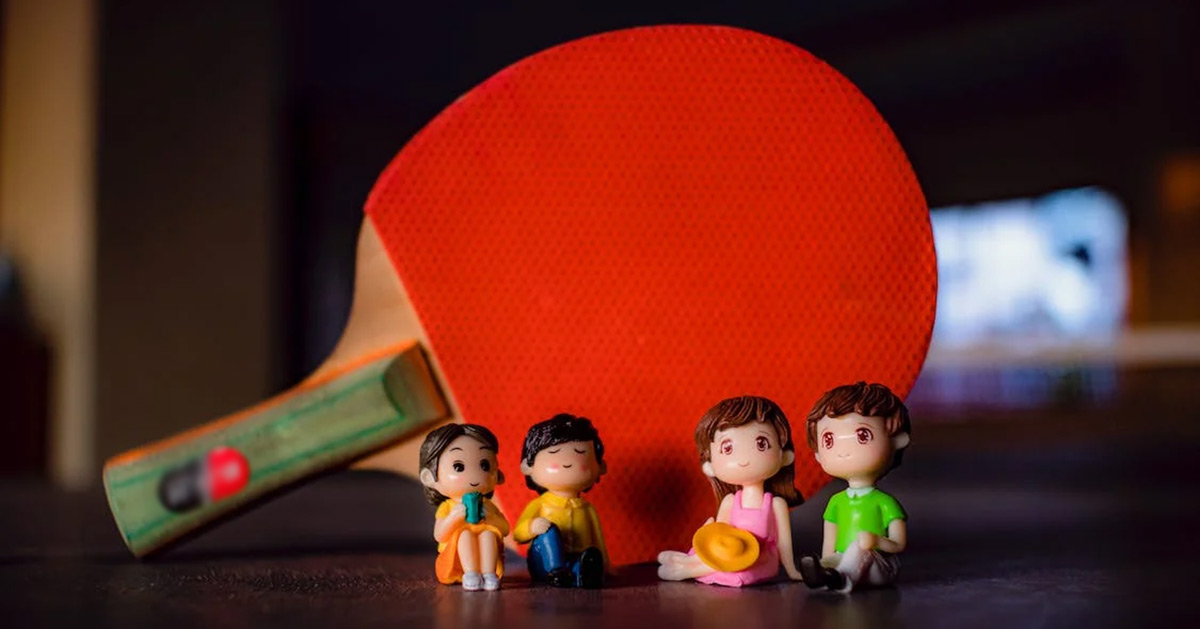
Factors to consider when buying table tennis rackets
1. BLADE
To choose the best table tennis racket for your playing style and ability level, consider numerous things. Blade material is crucial.
Table tennis rackets are judged by their blades. Wood, carbon, and composite table tennis racket blades are the most prevalent.
Hardwood blades are the most frequent and traditional. They have good control and feel and are cheaper than carbon or composite blades. Nevertheless, carbon or composite blades may have more power.
Carbon blades are wood with carbon fibre. This stiffens the blade, increasing power and speed. Carbon blades are more expensive than hardwood blades yet suitable for offensive players.
Composite blades use wood, carbon fibre, or fibreglass. For versatile players, these blades balance control, speed, and power.
Your playing style and skill level should determine your blade material. Wooden blades are suitable for beginners and defensive players. Carbon or composite blades may be superior for advanced or offensive players.
While selecting a table tennis racket, consider blade material, thickness, and weight.
Blade thickness ranges from thin to thick. Power and speed come from stiffer, thicker blades. They may be less forgiving and controllable. Thinner blades have better control and flexibility but less power and speed.
Blade weight affects how the racket feels in your hand and performs on the table. Heavier rackets are more powerful and stable but harder to manage. Yet, lighter rackets may be more manoeuvrable but less powerful and stable.
A thicker, heavier blade may suit an offensive athlete who relies on power and speed. Defensive players who prioritize control and precision may prefer a narrower, lighter blade.
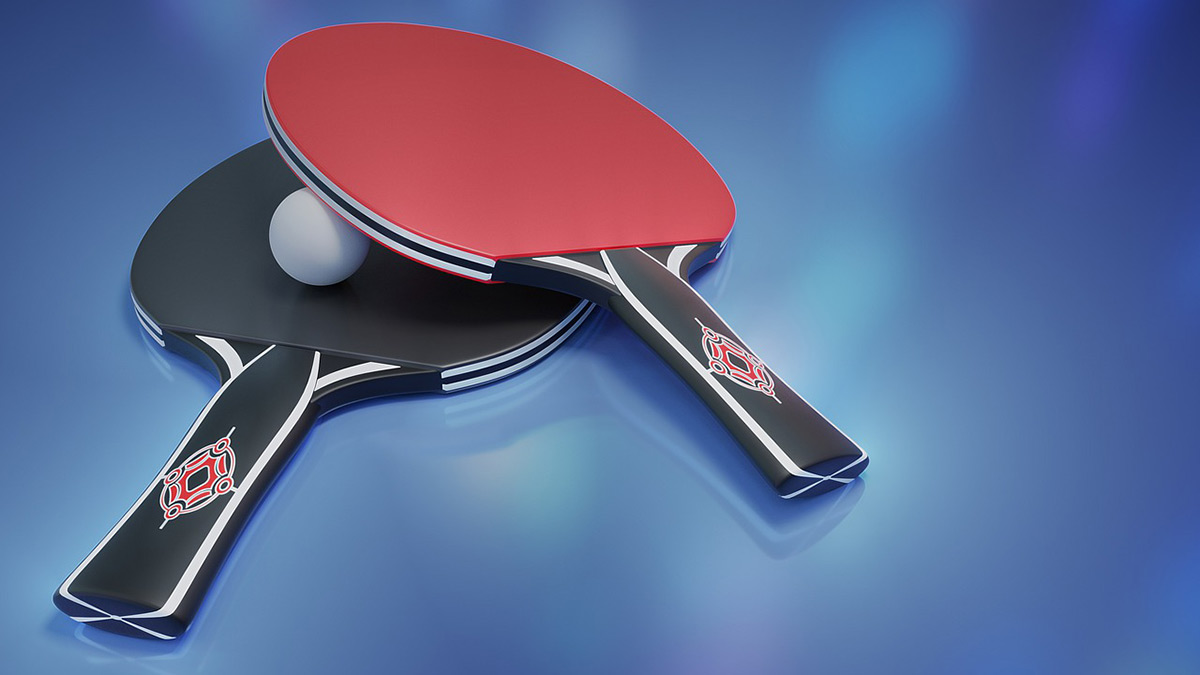
2. RUBBER
The rubber on the blade of a table tennis racket is as crucial as the blade itself. There are primarily three varieties of table tennis rubbers: pimpled, inverted, and anti-spin.Little, raised bumps are seen on the surface of pimpled rubber sheets. These pimples can be organized in several patterns, including short, medium, and long. Defensive players often utilize pimpled rubbers because they give excellent control and spin diversity. They may not, however, provide as much speed or power as inverted rubbers.
Inverted rubbers feature rubber coating and a smooth, rubber-facing exterior. Offensive players frequently use them because they offer more speed and power than pimpled rubbers. Inverted rubbers also provide for more spin control since they offer the tennis ball a larger surface area to grip.
Anti-spin rubbers are intended to reduce the amount of ball spin. Players who want to obstruct an opponent's spin or play defensively frequently use them because of their extremely low friction surface.
Inverted rubbers are better for offensive players who prioritize power and speed than pimpled rubbers, which are for defensive players who wish to control the ball and modify its spin. Anti-spin rubbers are ideal for players who wish to impede their opponent's spin or who play in a defensive manner.
Also, it is essential to examine the thickness and hardness of the rubber, since this can alter the behaviour of the ball when it strikes the racket. Thicker rubbers can provide greater power and control, whilst thinner rubbers provide a superior touch and feel. The harder the rubber, the greater its speed and power, whereas the softer the rubber, the greater its control and spin.
Read More - How to Choose the Tennis Rubber and Balls
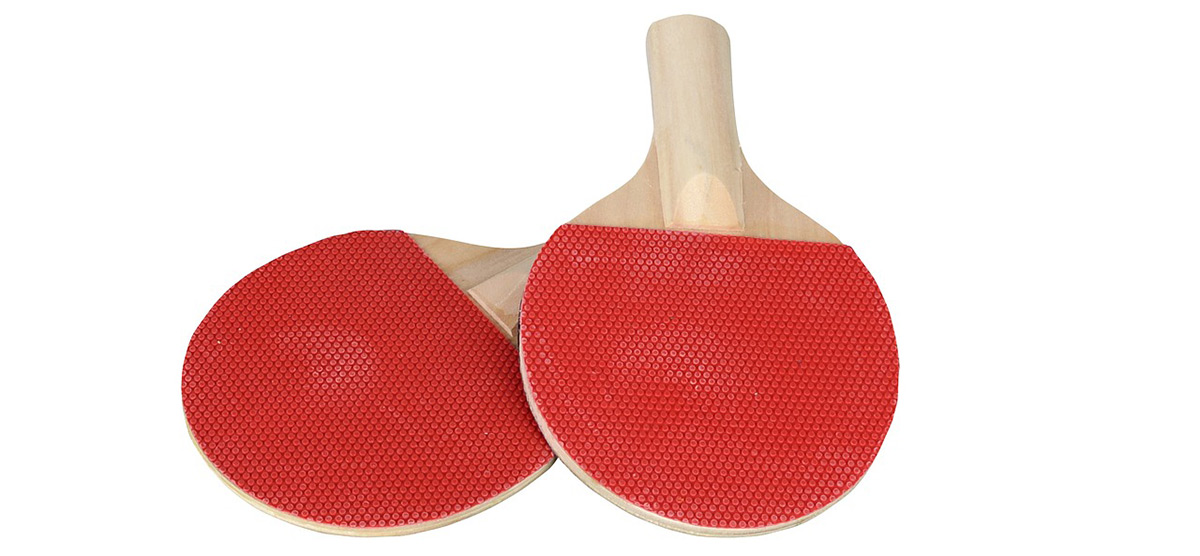
3. HANDLE & GRIP
A TT racket's handle is an often-overlooked component, yet it can have a substantial impact on a player's comfort and performance. Straight, flared, and anatomic are the three primary varieties of handle shapes.
Straight handle shapes are the most basic and conventional form. It is cylindrical in shape and provides a strong grip and steady feel. This type of handle is frequently preferred by players who use a penhold grip, in which the racket is gripped between the thumb and fingers.
The base of a flared handle is wider than the end, resulting in a shape that is broader at the bottom and smaller at the top. Its form offers a more ergonomic grip, allowing players to comfortably and firmly hold the racket even during intense play. Flared handles are preferred by players who employ a shakehand grip, in which the racket is gripped between the thumb and three fingers.
A handle with an anatomic shape is designed to conform to the natural shape of the hand. It has a broader base that tapers progressively towards the middle and then widens again towards the end. Its shape offers a pleasant grip that adjusts to the curvature of the hand, minimizing fatigue and ensuring a firm hold. Players with hand or wrist injuries or who play for extended periods of time like anatomic handles.
It is crucial to consider your playing style and personal preferences when selecting a handle design. Some players prefer a straight, traditional handle, while others prefer a flared or anatomic handle for its more ergonomic grip. A handle that is either small or too large can create discomfort or decrease your control over the racket.
Ultimately, the optimum handle shape for you will depend on your playing style and personal preferences, so it's vital to experiment with a variety of shapes and sizes to discover the player's grip and handle that feels most comfortable and effective.
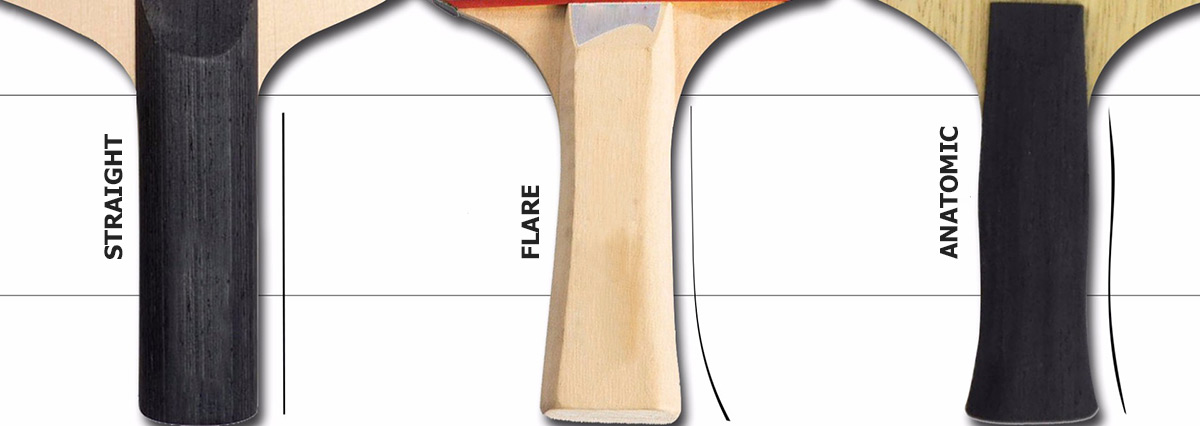
How to determine your playing style?
Identifying your playing style is a crucial step in finding the right table tennis racket. Your playing style is a reflection of your personal talents, limitations, and table preferences. That can affect the type of racket that best meets your requirements.
There are a variety of table tennis playing styles, and determining which one best describes you will help you reduce your options when picking a racquet.
First, there are offensive players that favour aggressive shots and centre their attention on attacking the opponent. Often, offensive players benefit from rackets with a larger sweet spot and more power.
Defensive players, on the other hand, prioritize control and strategy over the attack. They concentrate on returning their opponent's shots with precision and frequently demand TT racquets with a high level of control and good spin too.
There are also players with balanced offensive and defensive strategies. These players may benefit from a better bat, a tt bat that is more versatile and offers a balanced combination of power, control, and spin.
Consider the types of shots you utilize most frequently and the methods you deploy during a game to identify your playing style. You may also like to speak with a coach or veteran player who can assist you in identifying your strengths and shortcomings on the table.
After identifying your playing style, you may restrict your search for a table tennis racket that meets your specific needs and preferences.
Limitations of ratings (Speed, Spin, and Control)
Many table tennis players evaluate the performance of a racket based on its speed, spin, and control ratings while looking for a new racket. It is vital to recognize the limitations of these ratings, notwithstanding their utility.
The manufacturer frequently subjectively determines the speed, spin, and control values of a racket. Various manufacturers may use different ways to establish these ratings, making it impossible to compare rackets from different manufacturers.
In addition, the ratings of a bat may not always correspond to its performance in actual play. How a racket performs on the table can be affected by a player's unique skill level, playing style, and the type of ball utilized.
It's also essential to realize that a high grade in one category (such as speed) may come at the expense of another (such as control). So, a racket with a higher speed rating may be more difficult to control than one with a lower speed rating.
While ratings can be a valuable tool for comparing table tennis racquets, they should not be the only consideration considered when selecting a table tennis racquet. It is essential to experiment with several rackets and consider criteria such as your playing style, skill level, and personal preferences in order to find the racket that works best for you.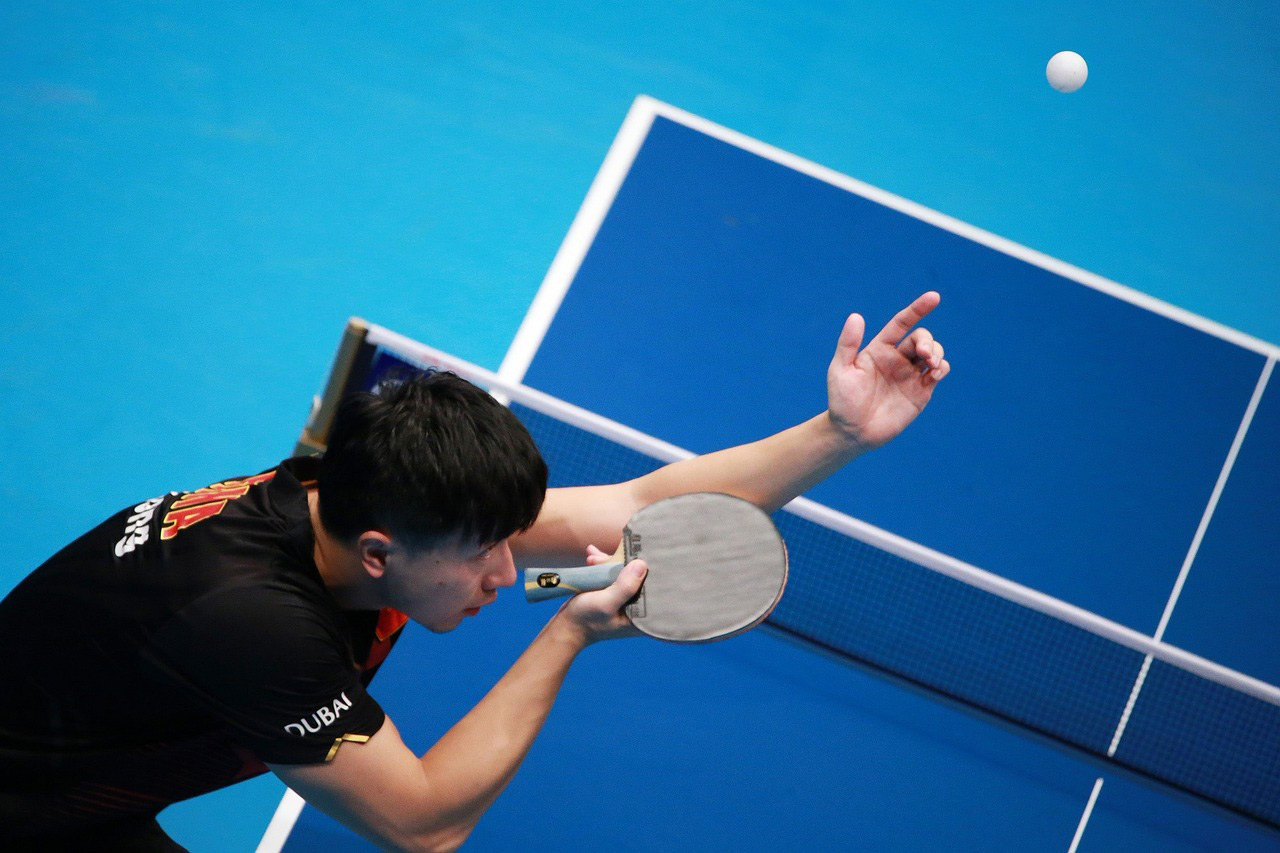
FAQ's
1. What is the difference between a pre-assembled racket and a custom racket?
Pre-assembled rackets are mass-produced rackets that are offered as-is, whereas custom rackets are manufactured to order according to a player's individual preferences and requirements. Customized rackets offer greater customizing choices and are typically more expensive than pre-assembled rackets.
2. Is it necessary to buy an expensive racket to improve my game?
No, purchasing an expensive racket is not required to improve your game. If the racket does not match your playing style and ability level, it may not improve your game. Instead, you should choose ping pong bats that meet your needs and tastes, whether it is pre-assembled or customized. Constant practice, training, and technique are more significant than the price of your racket for improving your game.
3. How do I know if a particular tt bat is a right weight for me?
A table tennis bat's weight is determined by personal taste and playing style. Lighter bats are typically simpler to move and produce faster swings, whilst heavier bats provide greater power and control. It is advisable to experiment with various racket weights to identify the optimal alternative for your needs. Consider your physical characteristics, such as your strength and stamina, as well as your playing style, such as your grip and stroke patterns, when determining the appropriate weight for your game.
4. What is the difference between a recreational and a competitive racket?
The design and performance of recreational and competition rackets are distinct. Recreational rackets are often less priced, built for recreational play, and prioritize usability and durability. Typically, they have a thicker, more rigid blade, a smaller sweet spot, and less spin and speed than professional rackets. Competitive rackets, on the other hand, are built for advanced players and professional contests, with a focus on performance and customisation. They often have a thinner, more flexible blade, a larger sweet spot, and greater spin and speed capabilities, as well as choices for custom rubbers and blades.
5. Can I switch between different grip types?
Changing table tennis grip types is achievable, but requires experience and adaption. The shakehand grip and the penhold grip are the two most common table tennis grips. The shakehand grip is the most common because it allows for greater wrist and forearm mobility, although the penhold grip provides a more natural feel for Chinese-style strokes. It is advised to choose a grip style that feels comfortable.
Conclusion
Choosing the appropriate table tennis bat is crucial for improving performance and enjoyment of the game. Consider the blade material, rubber type, grip type, weight, and balance, as well as your playing skill, style, and goals, before purchasing a tt bat. Avoid buying a TT racket based simply on price or brand like Stag, Stiga, GKI, selecting a TT racket that does not match your skill level or playing style, and failing to maintain and replace your racket as required. Your table tennis racket may be a wonderful instrument for enhancing your skills and reaching your goals on the table if you give it due consideration and maintain it properly.Sportsuncle is here to full fill your buy-online needs.
Your email address cannot be published. Required fields are marked*

 My Account
My Account Track Order
Track Order Sports Guide
Sports Guide
